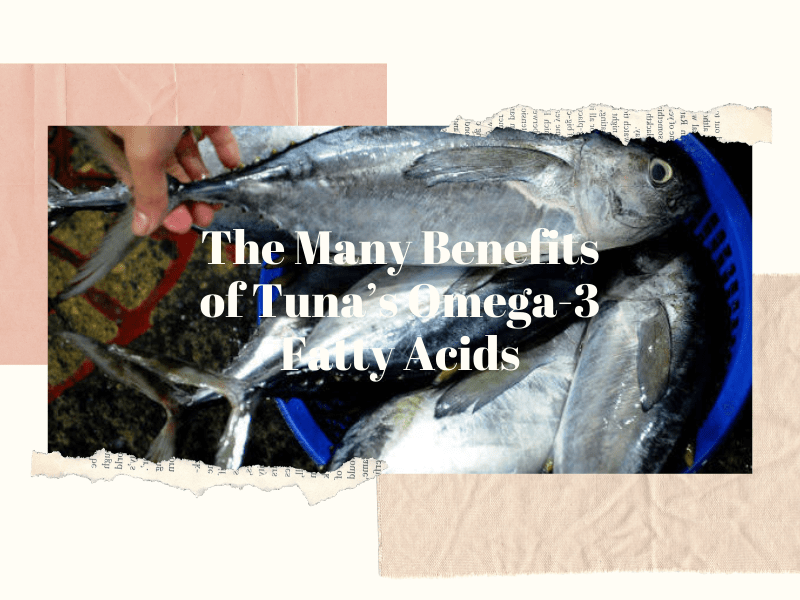The Many Benefits of Tuna’s Omega-3 Fatty Acids
Tuna such as yellowfin tuna has a high amount of omega-3 fatty acids, which has EPA, DHA, vitamin B complexes, niacin, selenium, magnesium, thiamin, phosphorous, and potassium. Tuna is incredibly rich in nutrients that are good for many parts and areas of the body, making it the best choice of food item to eat that contributes to a balanced diet. You can order fresh tuna online in order to reap the most benefits, but in the meantime, here are all the benefits from eating tuna on a constant basis. As we age, we cannot avoid the decline in brain function. The good news is that consuming more Omega-3 fatty acids causes a reduction in age-oriented mental decline and can also reduce the likelihood of Alzheimer’s disease. People who consume Omega-3 fatty acids that you would find in Tuna are less likely to develop depression. Omega-3 fatty acids are proven to reduce symptoms of people who are suffering from various medical conditions. Researchers treat Omega-3 as an integral antidepressant drug. Besides Omega-3 fatty acids, selenium is another common component of tuna. Selenium is crucial to our brain’s enzymes that attack free radical cells, which would otherwise become a detriment to our brain cells. Without the proper intake of selenium our brains will start to slow down and degenerate. Additionally, selenium also protects our brains by neutralizing the nasty side effects of Mercury. How Tuna Helps the Heart: Communities in the Maldives tuna fishing sector have steadily low chances of getting chronic heart conditions. Omega-3 fatty acids among other minerals are the main contributors for keeping a healthy heart. Omega-3 fatty acids aren’t produced anywhere inside your body, so it is important that you consume seafood as a means to get them. Omega-3 fatty acids also can help reduce the levels of triglycerides in your body. Eating tuna on a regular basis can reduce these triglycerides from 15 to 30 percent. Omega-3 fatty acids, in addition to potassium, can reduce blood pressure levels for patients who suffer from hypertension and related symptoms. Eating tuna will also raise “good” cholesterol levels, or HDL (high density lipo-protein) cholesterol. Having high levels of HDL is crucial so that you have less likelihood of heart disease. Low levels of HDL cholesterol would make you more likely to get heart disease. When combined with B vitamins, omega-3 fatty acids will prevent blood platelets from clotting or clumping together, so that blood passages can remain open and continue to travel blood and other important nutrients around the body. Omega-3 fatty acids that come with tuna also prevent the build-up of plaque in the arteries, so this also prevents blockages in the heart and plaque from hardening inside, making it more difficult to cleanse. How Tuna Helps the Immune System: When it comes to autoimmune diseases, the immune system will misidentify healthy cells for malicious ones and attack them. One condition in which helpful cells get destroyed is in type 1 diabetes. Omega-3 fatty acids, however, can target some of these diseases which is very important during the early stages of each of them. The meat that is found in tuna is also high in selenium, manganese, zinc, and vitamin C. These antioxidants are what combat free radical cells in the body, created from byproducts of metabolism. When free radicals aren’t neutralized, they can damage cell walls, which can cause one of many diseases in the body. When it comes to autoimmune diseases, the immune system will misidentify healthy cells for malicious ones and attack them. One condition in which helpful cells get destroyed is in type 1 diabetes. Omega-3 fatty acids, however, can target some of these diseases which is very important during the early stages of each of them. How Tuna Helps the Skin: Omega-3 fatty acids found in tuna also help individuals get and maintain soft, supple, and moist skin. A constant diet of tuna will keep skin looking young and wrinkle-free. Eating tuna will also regulate how much oil is secreted on your skin, and can keep your skin hydrated so that it is healthier and cleaner, overall. Omega-3 fatty acids can also prevent as much acne from appearing on the face due to the lack of oil that builds up on it. Omega-3 fatty acids will also keep your hair’s follicles from hardening. When hair follicles harden, the scalp around the follicles start to swell up. When this happens, it would be harder for your scalp and hair to receive nutrients from the hair care products you use. Finally, EPA is also capable of protecting your skin from the sun. EPA is what blocks sun rays that are able to dissolve the collagen in your skin. In other words, eating tuna will protect this collagen and keep your skin healthy. Conclusion Omega-3 fatty acids found in tuna can help keep your skin, heart, brain, and immune system healthy. A diet of tuna is also capable of strengthening your bones and muscles. Buy fresh tuna online from Maldives to continue receiving many positive benefits to your body.


